When I was little, I loved watching tv and movies. I spent hours drawing while watching a beloved classic Disney movie or an old musical. I enjoyed watching many tv shows from the 80s and 90s with my parents. The joy of renting a movie from Blockbuster and watching it my first time with my brothers (who had probably already seen it as they’re a few years older than me) was unparalleled delight. Honestly? I probably watched more tv and movies than I read books. But I remember summer days spent outside in the woods next to our house or swinging on the best climbing tree there ever was and playing sports with my brothers with equal pleasure. I was a combination of outdoors all day and indoor movie watching; both carry a special place in my heart.
My love of movies as a kid influenced my choices of college courses and I was lucky enough to get into the very popular freshman seminar (with limited class size,) Crime Film. I had no idea what I was getting into, as indeed I bet most of my fellow classmates did’nt either, but I loved movies and thought it looked like fun. It wasn’t just a “movie” class, it was a legit rigorous academic college course. We read a ton of academic articles & books, literature, and watched at least 1-2 films a week. We had weekly quizzes and written responses, some oral presentations, and discussion was of the utmost importance. My beloved Professor Welsch (who later became a sweet friend) taught us to pause, consider everything in the film from the acting to the sets and props, lighting, music or lack thereof, mise-en-scene, script, character development and more because each of those elements was a deliberate and intentional choice by the director and team. Learning to recognize those components was key to recognizing foreshadowing, symbolism, and the messages within each film. We studied the crime film genre over decades of movie-making and tracked the historical era in which each was made, examined the cultural implications, noted how or if it changed through the years, and which key elements were always present in order to be categorized within that genre. The professor had incredibly high expectations for our writing equal to any English literature or composition course (as my English-major roomie noted.) It’s the class that taught me to observe, dig deeply, consider, analyze, and write. I loved it so much I went on to minor in Film Studies. And it completely changed how I watched movies.
We’ve used movies throughout our homeschool. Sometimes we enjoyed a book/movie comparison. Films also helped us understand a historical era through visual images. Reading is and always will be the backbone of our homeschool and our knowledge of literary elements and analysis contribute to our “reading” of a film. Last year, my oldest entered high school (eek!) and chose to study the World Wars; I knew it was a perfect time to introduce him to the academic side of Film Studies. World War I was the first war in which footage could be recorded (limited though it was) and film propaganda was used on all sides during World War II. There are so many movies that portrayed these wars, making it an ideal time to learn film vocabulary, how to “read” a film for its messaging, and to how to recognize the visual cues which support that message. He learned to look at the year in which the film was made, to research what was going on at the time in which it was made in order to gain insight into the message being conveyed on screen. He has since told me that I’ve “ruined movie watching forever” because he can’t watch films as he did before. He has become a critical movie watcher and understands the power of film and visual messaging.
I’m not sorry in the least. In the same way that I want him to be able to think deeply about his reading, I want him to critically analyze what he is watching.
There’s no denying that we need to be wise with what we watch and feed our souls. I think we need to recognize the appeal and influence of films. Film studies should be more than comparing a book to its movie adaptation, though that’s an excellent way to start.
Like books, films tell stories and are a means of communication. When Gutenberg introduced his printing press it changed the world with new technology that could communicate ideas to the masses. In that same way, films revolutionized communication in the 20th century which has led to the global 24/7 visual information innundation through phones and devices. Learning to “read” the visual language helps us recognize visual messaging beyond entertainment value so we can critically recognize both the artistic technique and analyze the idea it’s communicating.
Films reflect the culture and values of society of their day, making them a valuable tool for studying modern history. They help to make and shape the attitudes and moral standards of society, charting a course to the future. I’d argue that teaching my children to understand and recognize a message through visual storytelling is just as important today as teaching them to discern between twaddle and living books. (For transparency’s sake, I am not a purist, we own collections of Diary of the Wimpy Kid and DogMan.) When my children leave my house I want them to have the tools they’ll need to discern the intent and message of both books and a film or visual content so they can decide for themselves whether it is good for their minds, hearts, and souls.
And there are so many amazing films I want to share with my kids. Movie nights are a family favorite around here and rewatching films with their commentary and discussion interspersed is one of my favorite things of all time. We spend plenty of time reading aloud and reading independently, but it’s just as special introducing them to Indiana Jones and Gene Kelly as it is Aslan and Peter Rabbit.
Watching films as a family is a fun, low stress way to practice the same skills as literary analysis along with some visual observational skills thrown in. We’ve created a culture of discussion around the movies we watch and enjoy lively debate that hones our communication skills. We’ve used Marvel movies to discuss current events and the importance of character as well as various Muppet Movies to discuss smart wit, humor, and culture of the 70s and 80s. And while some of my kids are now aware, for many years they had no idea they were practicing critical analysis. This kind of thinking carries over into their creative lives, language arts elements as well as their understanding of history, culture, and current events.
In the hopes of demystifying film studies, I’ve included my first Film Study guide to get you started. There are discussion questions you can use for any film as well as a short history of film and an introduction to film vocabulary. If there is enough interest, I hope to make more film guides (including guides for Marvel’s The Avengers and The Magnificent 7) If you have any questions or thoughts, let me know! Let’s not shy away from movies, let’s be empowered and use them as a tool to enrich our homeschool!
Enjoy!




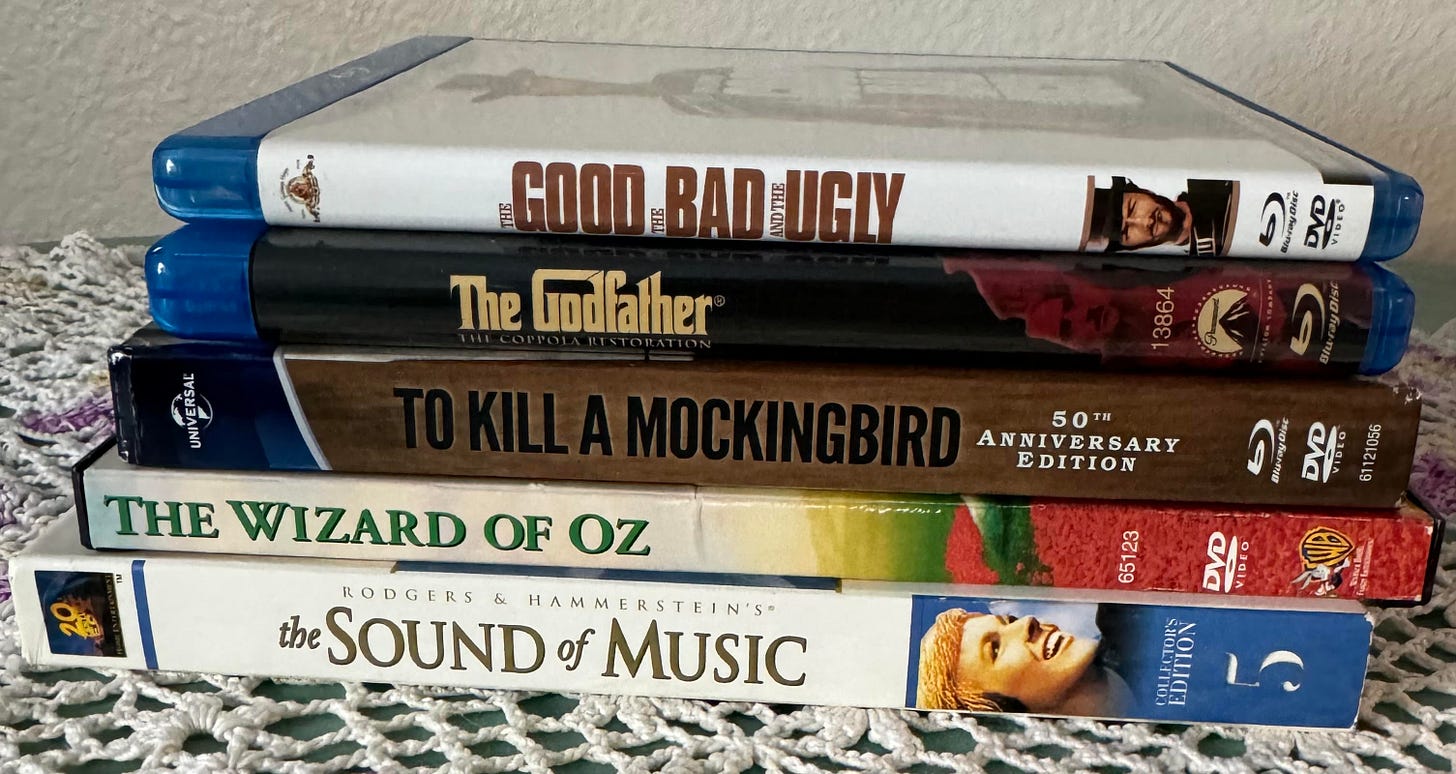
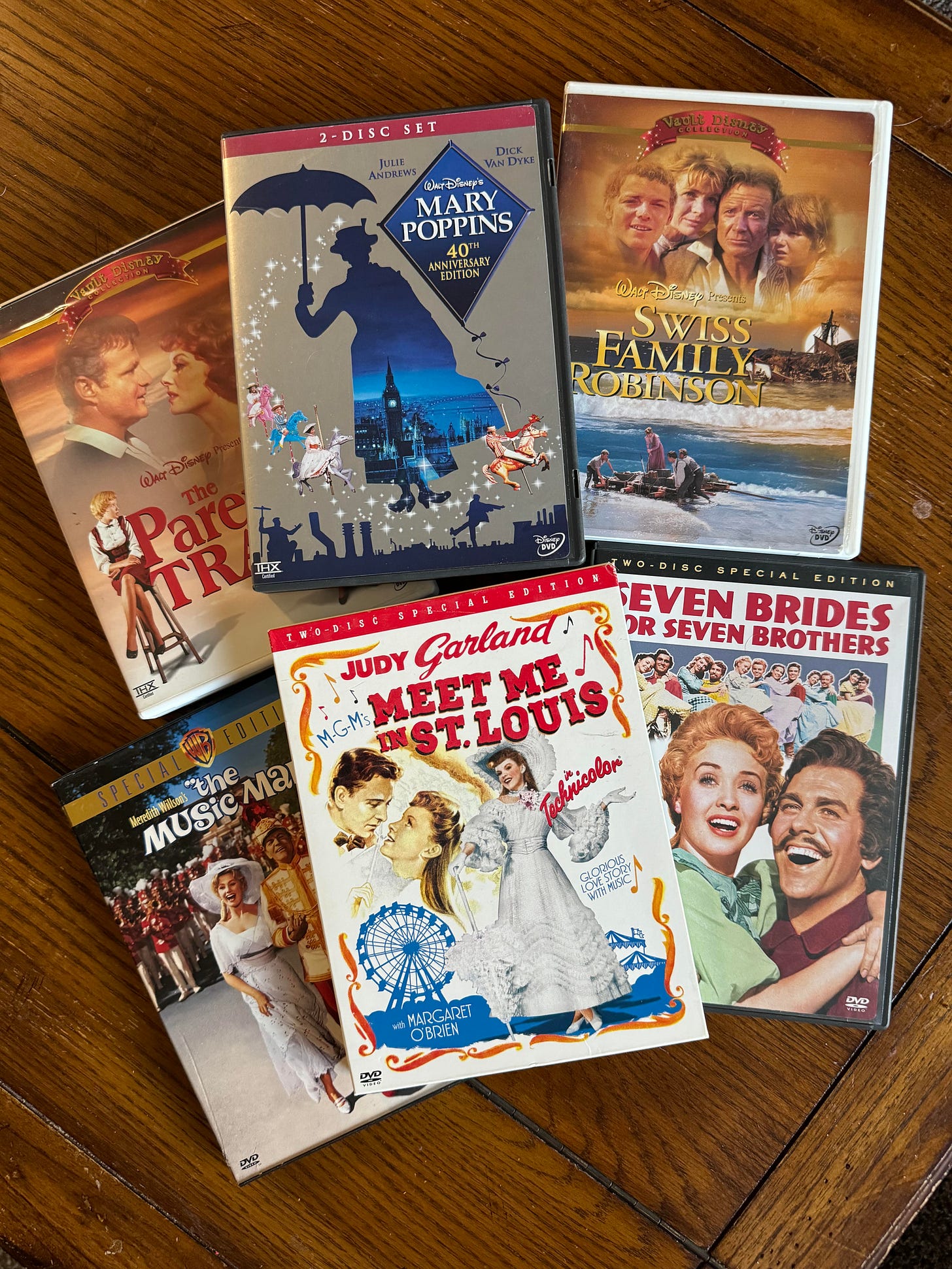
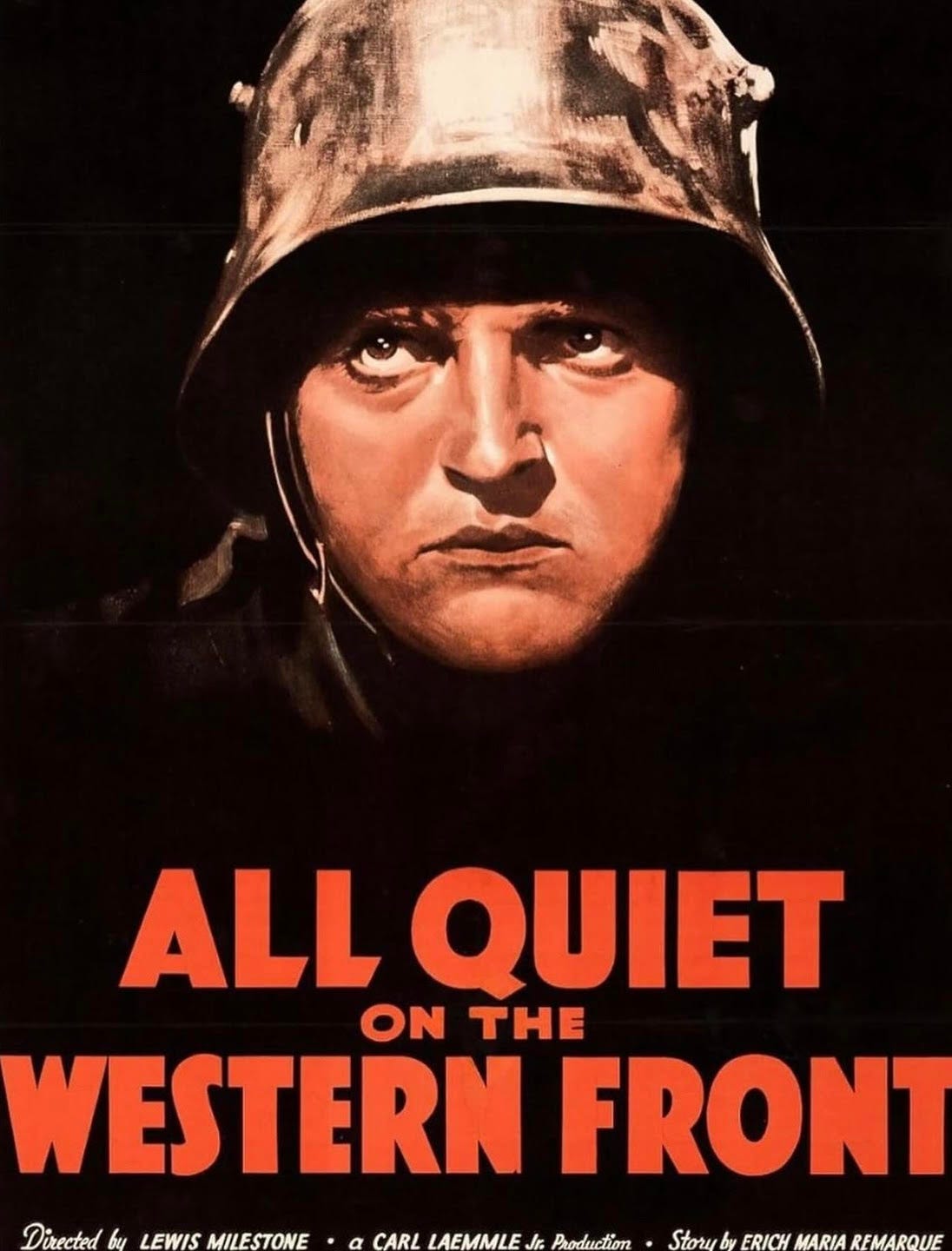
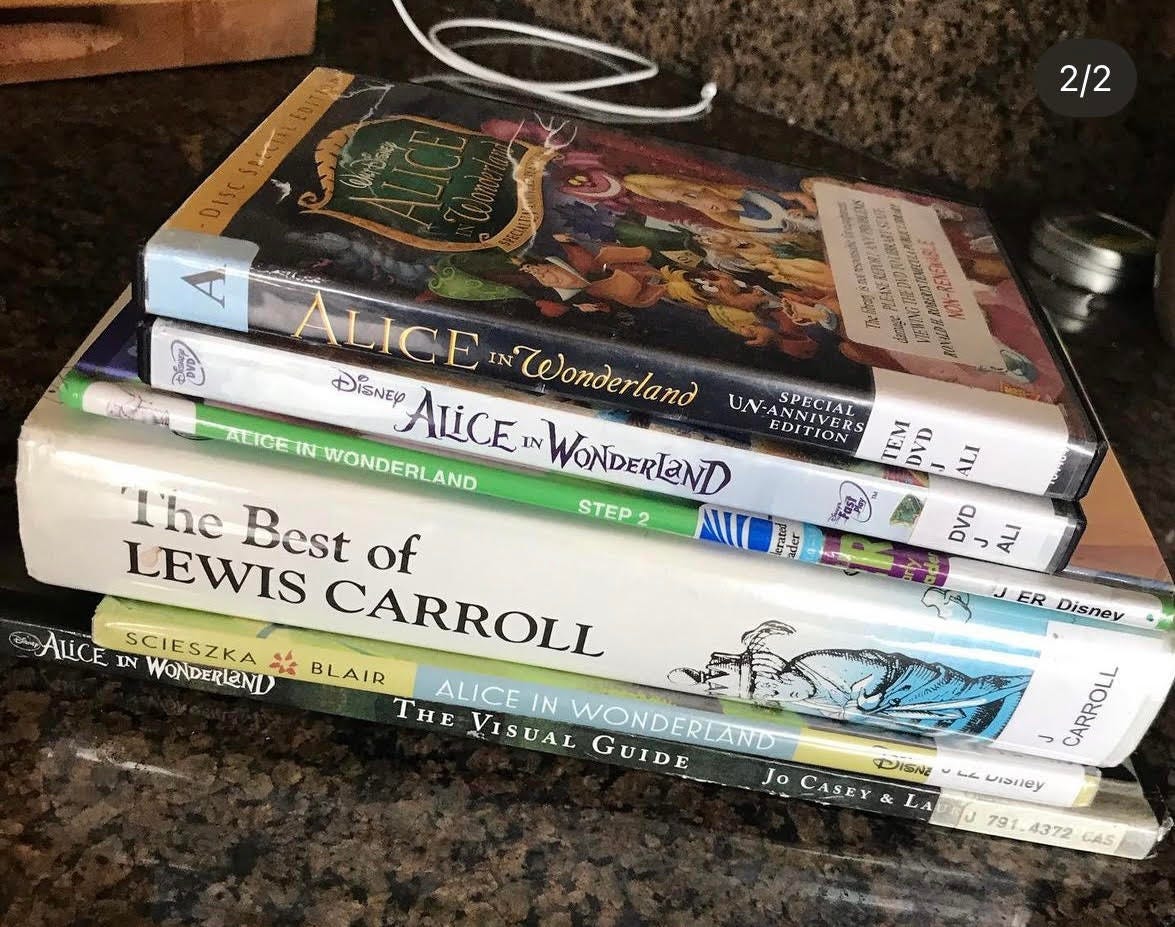
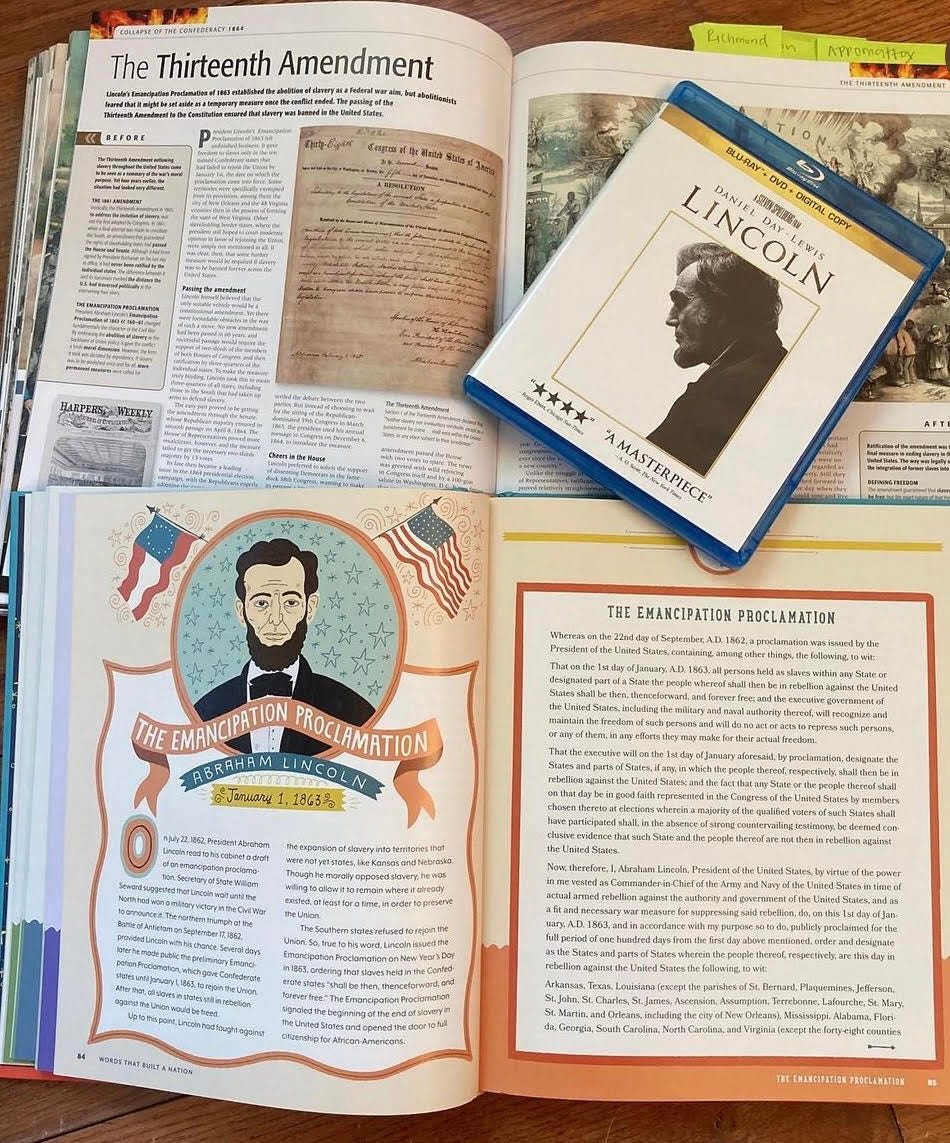
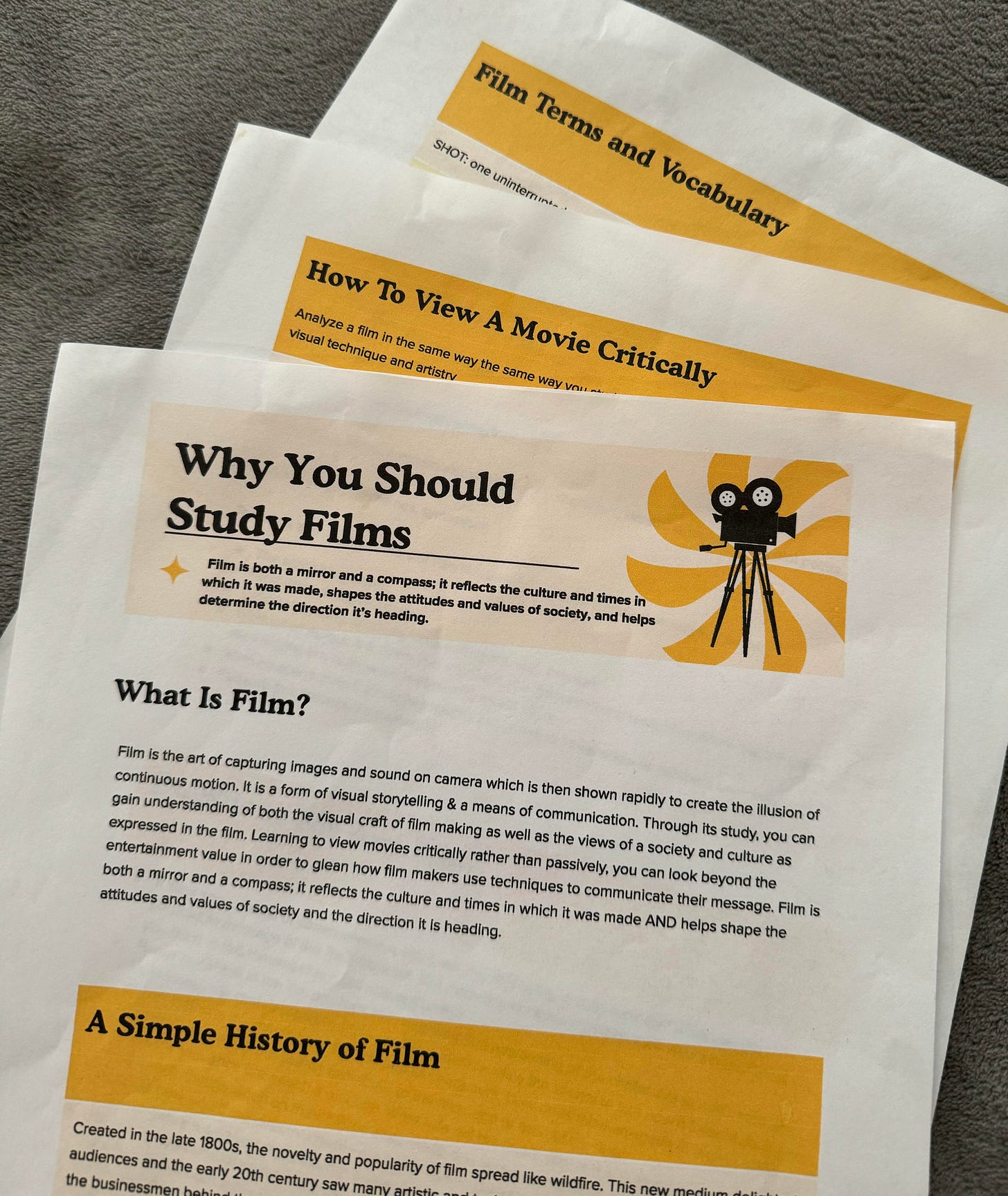
I love this so much. Watching movies together is one of our favourite activities. I have loved sharing old movies with my kids, and this inspires me to dive even deeper! Can’t wait to use the film guide throughout the year with my boys!